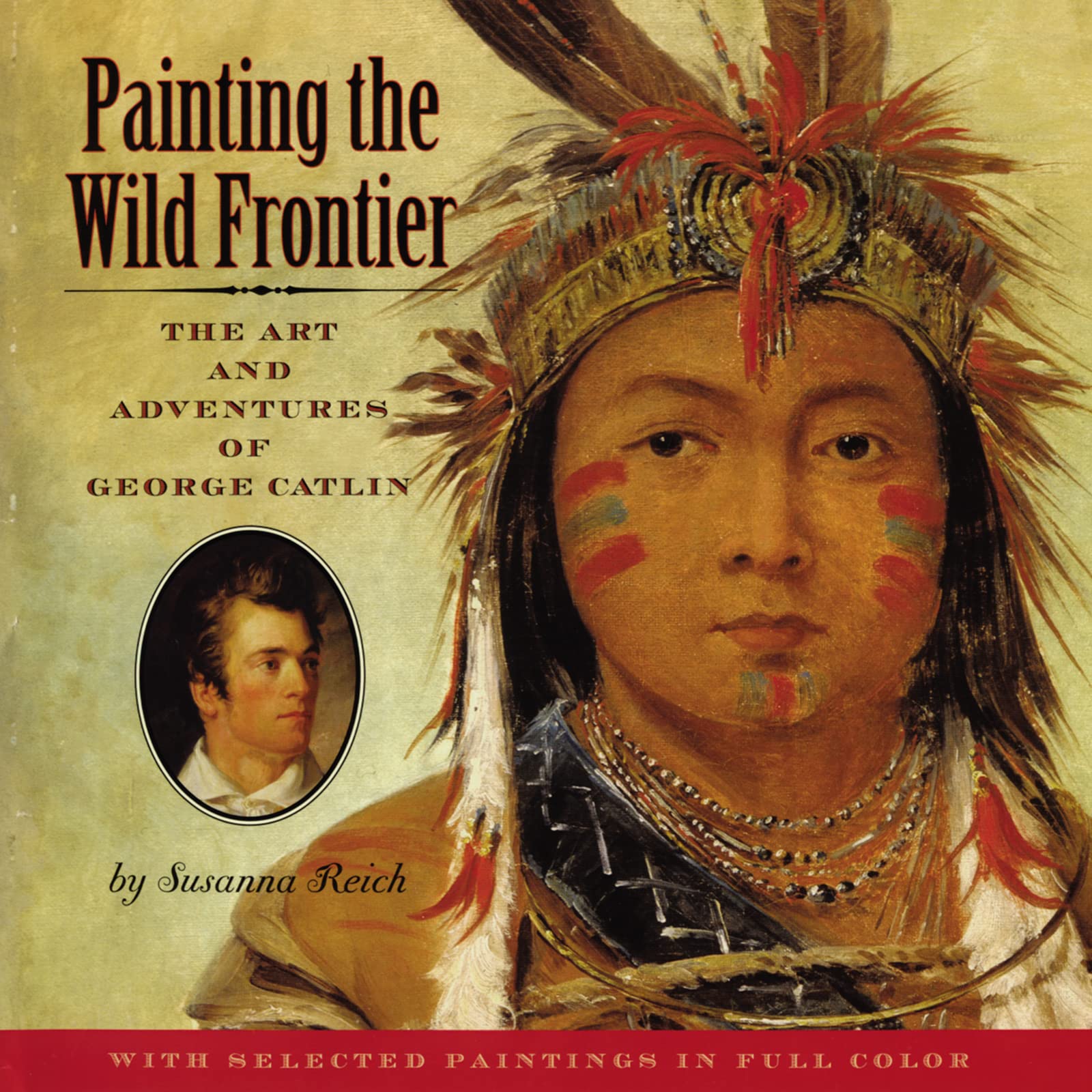Painting the Wild Frontier: The Art and Adventures of George Catlin
Clarion Books, 2008
ISBN 978-0618714704
Buy from an independent bookstore
Buy from Amazon.com
“Without peer or parallel.” —Kirkus Reviews
“Spectacular”—”Curriculum Connections,” School Library Journal and Teaching Books.net
Click here for Discussion Guide and Activities
The 19th-century American artist George Catlin painted Indian tribes from Alaska to Tierra del Fuego, and created a sensation with his “Indian Gallery” of art and artifacts. He championed the rights of Native Americans in an era of prejudice and mistrust, and his iconic images helped shape our understanding of Native cultures and the American West.
This meticulously-researched biography recounts true tales of buffalo hunting, life and death encounters in the Amazon jungle, and more, making this book a page-turner for readers ages 10 and up. Painting the Wild Frontier features 100 illustrations, including many of Catlin’s own paintings (some in full color), as well as archival prints and photographs. The book also includes a foreword by John Haworth (Cherokee), Director of the National Museum of the American Indian’s George Gustav Heye Center.
Honors
- Kirkus Reviews – Best YA Books of 2008
- Booklist – Top Ten Arts Books for Youth
- Association of Booksellers for Children – Best Books
- Society of School Librarians International, Honor Book
- 3 starred reviews
Here’s what the reviewers are saying:
Kirkus Reviews, June 15, 2008, Starred Review ★
With graceful writing and fascinating artwork, this well-designed biography explores the work and adventures of George Catlin. Best known for his many paintings of American Indians, Catlin traveled extensively in the American West and South America in the mid-1800s. He lived rough and encountered many dangers, some life-threatening. His own writing proves a fertile source of lively stories and quotations: He described being attacked by a jaguar that he was hunting, possibly for its tail, which he recommended for its “deliciousness of flavor.” Reich places Catlin’s life in the context of art history and provides an overview of the Indian tribes he encountered and their plights. The complex portrait of Catlin is even-handed; he hoped to champion the cause of Indians but also partly exploited them to make his living. While he created a remarkable historical record, his family suffered financially and by his prolonged absences. An author’s note addresses the challenges of a white author’s writing about Indians and the reliability of Catlin’s writing. A handsome, well-documented volume. (timeline, endnotes, bibliography; map, index not seen) (Biography. 12 & up)
Booklist, June 1, 2008, Starred Review ★
Reich’s own words (“As a white person writing about American Indians, I have tried to be respectful…but, like George, I cannot completely erase my cultural biases, no matter how hard I try,”) reflect the dominant theme of her handsome biography of nineteenth-century painter George Catlin, famous for his portraits of Native American life. Underlying the lucid, detailed discussion of the artist, which is illustrated with beautiful archival prints and photographs of his work, are the whites’ conflicting views of Indian peoples, then and now – especially the image of the “noble savage.” Quoting extensively from Catlin’s letters and notes, Reich shows how he was driven to paint authentic cultural rituals and individuals, to champion the Indians’ cause, and to record their rich, vanishing way of life in all its diversity. At the same time, she never denies that Catlin exploited his subjects, exhibiting the “primitives,” in the U.S. and abroad. There are long captions with the paintings, and the extensive back matter includes thorough chapter notes, a bibliography, and a time line. A great introduction to Catlin’s work as well as an excellent title to use in social studies, history, and art classes. – Hazel Rochman
School Library Journal, August 1, 2008, Starred Review ★
“Using primary sources, including Catlin’s own diaries and letters, Reich helps readers understand the importance of the artist’s work and to see him as a man in his own time. The personal documents expose both selfless and selfish sides of his character. At times, he was sensitive to the Native peoples and their cultures, but he also used them for his own gain. Readers also see the artist as a neglectful family man and less-than-successful businessman; however, above all, Catlin is seen as an adventurer. Many of his paintings illustrate the text and add to a sense of excitement. A few of the larger reproductions are in color, giving a clearer view of the artist’s palette and style. Other period works are also included. All are well captioned with additional identification and information that ties in to the text. Quotations are carefully documented in chapter footnotes. The author’s note explains her choice of terminology and spelling as well as her efforts to avoid cultural bias in writing this book. This is an excellent choice for libraries looking for good biographies, either for reports or pleasure reading.” – Carolyn Janssen, Public Library of Cincinnati and Hamilton County, OH

